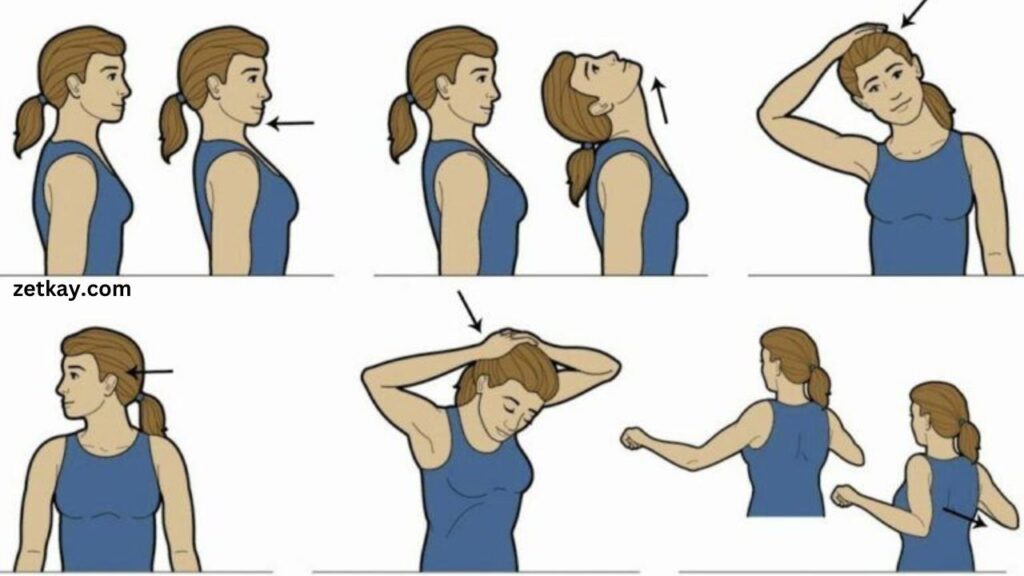Discover effective, easy at-home exercises for neck and shoulder pain relief. Improve posture, ease tension, and build strength with these simple yet impactful techniques.
Introduction
Neck and shoulder pain are common complaints in today’s fast-paced, technology-driven world. Whether it’s from long hours at a desk, poor posture, or daily stress, these discomforts can significantly affect your quality of life. The good news? Relief is just a few simple exercises away! This guide will walk you through easy at-home exercises that can help alleviate pain, improve posture, and prevent future discomfort.
Overview
In this article, you’ll learn about the causes of neck and shoulder pain, the importance of regular exercise, and how to prepare for an effective workout. We’ll dive into specific stretches, strengthening exercises, and relaxation techniques tailored to target tension and build resilience. By incorporating these practices into your routine, you can achieve lasting relief and a healthier lifestyle.
Understanding Neck and Shoulder Pain

Common Causes of Neck and Shoulder Pain
Neck and shoulder pain is often caused by muscle strain, injury, or chronic conditions like arthritis. Everyday activities such as using smartphones, sitting at a desk, or lifting heavy objects can also contribute to discomfort.
How Poor Posture Contributes to Pain
Slouching while working or walking can strain the muscles and ligaments in your neck and shoulders. Over time, this misalignment may lead to stiffness, reduced mobility, and persistent pain.
The Impact of Stress on Neck and Shoulder Tension
Stress can cause muscle tightness, especially in the shoulders and neck. When you’re stressed, your body produces cortisol, which increases muscle tension and exacerbates discomfort.
Read More:
Jumping Rope Everyday For Weight Loss
Back Pain Relief Exercises
Importance of Regular Exercise
How Exercise Eases Neck and Shoulder Pain
Regular exercise improves blood circulation, reduces inflammation, and strengthens muscles. By targeting the neck and shoulder areas, you can alleviate stiffness and prevent future discomfort.
Benefits of At-Home Exercises
At-home exercises are convenient, cost-effective, and customizable. They help improve flexibility, posture, and muscle strength without requiring expensive gym memberships or equipment.
Preparing for At-Home Exercises
Necessary Equipment and Space
You don’t need much to start. A yoga mat, resistance bands, and a sturdy wall or chair can suffice. Ensure your space is quiet, clean, and free of obstructions.
Warm-Up Tips to Avoid Injury
Warming up prepares your muscles and joints for exercise, reducing the risk of strain. Start with light cardio, such as walking in place, followed by gentle dynamic stretches.
Effective Stretching Techniques
Neck Rolls and Stretches
Slowly tilt your head forward, backward, and side-to-side to release tension. Hold each stretch for 10-15 seconds.
Shoulder Rolls and Pendulum Stretches
Roll your shoulders forward and backward to increase flexibility. For pendulum stretches, lean forward slightly and let your arms dangle, making small circular movements.
Child’s Pose for Tension Relief
Kneel on the floor, stretch your arms forward, and rest your forehead on the mat. This yoga pose gently stretches the shoulders and spine.
Strengthening Exercises for Pain Relief
Scapular Squeezes
Sit or stand with your back straight. Pinch your shoulder blades together and hold for five seconds. Repeat 10-15 times.
Wall Angels
Stand with your back against a wall and your arms raised like a goalpost. Slowly move your arms up and down, keeping them in contact with the wall.
Resistance Band Exercises
Using a resistance band, perform rows or lateral pulls to strengthen the muscles supporting your neck and shoulders.
Relaxation Techniques for Pain Relief
Deep Breathing Exercises
Practice diaphragmatic breathing by inhaling deeply through your nose, holding for a few seconds, and exhaling slowly. This reduces stress and promotes relaxation.
Progressive Muscle Relaxation
Tense each muscle group, hold for a few seconds, and then release. Start from your toes and work upward to your neck and shoulders.
Lifestyle Adjustments for Long-Term Relief
Ergonomic Workspace Setup
Position your desk, chair, and monitor to maintain a neutral spine. Use a supportive chair and keep your screen at eye level.
Maintaining Good Posture Throughout the Day
Be mindful of your posture while standing, sitting, or walking. Engage your core and keep your shoulders relaxed.
When to Seek Professional Help
Recognizing Severe Symptoms
If your pain persists, worsens, or is accompanied by numbness or weakness, consult a healthcare provider immediately.
Consulting a Physical Therapist
A physical therapist can design a personalized exercise program and provide hands-on techniques to alleviate your discomfort.
FAQs
What are the best quick stretches for neck pain?
Neck rolls, side stretches, and shoulder rolls are effective for immediate relief.
How often should I do these exercises?
Aim to exercise at least three times a week, incorporating stretches daily for optimal results.
Can stress make neck and shoulder pain worse?
Yes, stress increases muscle tension, leading to stiffness and pain.
Do I need special equipment for these exercises?
No, most exercises require minimal or no equipment, such as a yoga mat or resistance band.
How long does it take to see results?
You may notice improvements within a few weeks of consistent practice.
Should I avoid any movements if I’m in pain?
Avoid high-impact exercises or movements that worsen your pain. Consult a professional if unsure.
Conclusion
Regular at-home exercises for neck and shoulder pain relief can significantly improve your quality of life. By integrating these stretches and strengthening techniques into your routine, you’ll enjoy better posture, less tension, and enhanced overall well-being.
